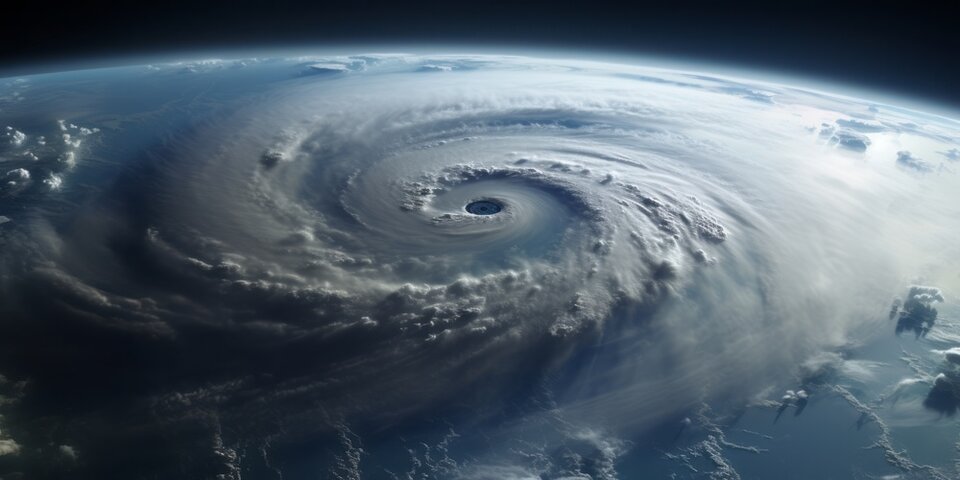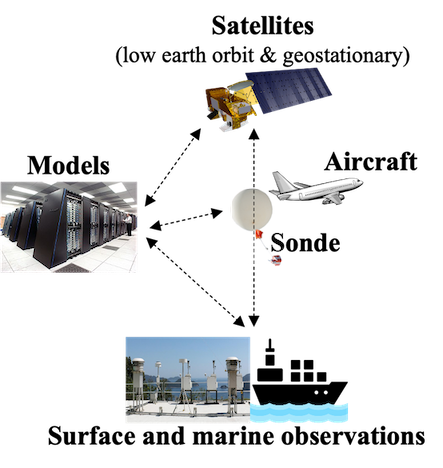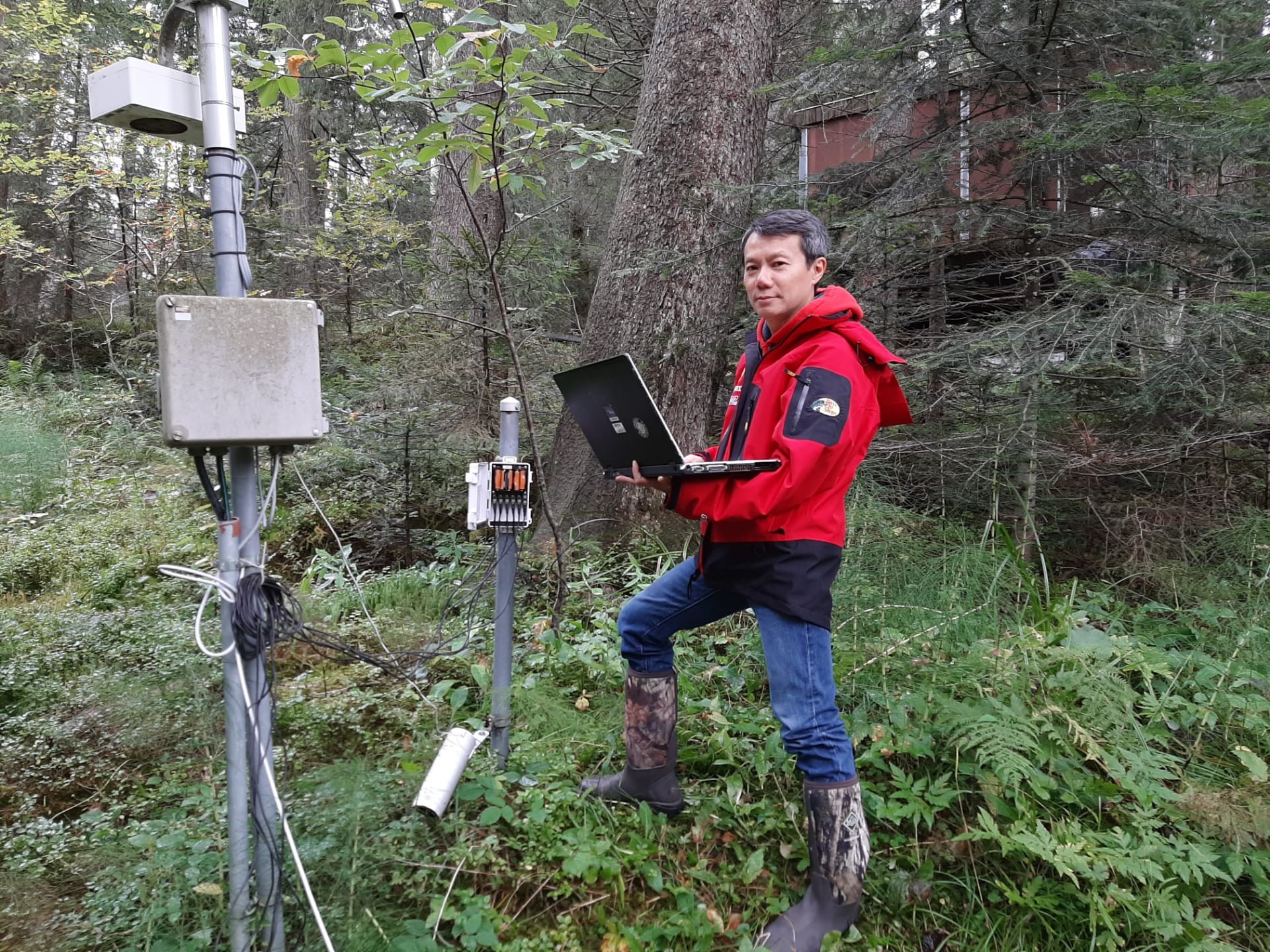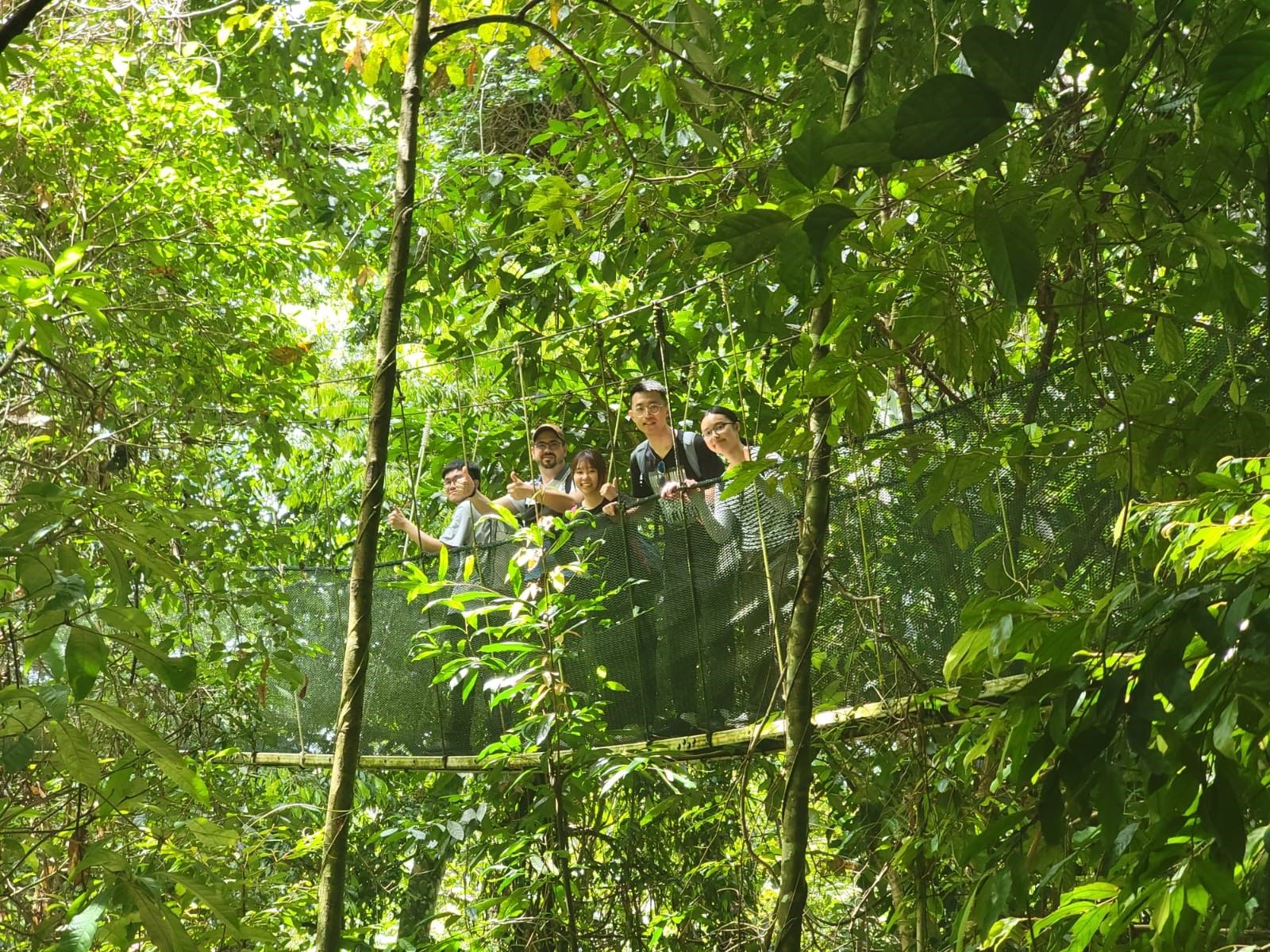Atmospheric Science
The understanding of the complex fluid flow (of air) in the atmosphere and ocean (sea water) starts from simple laws of physics. Such understanding enables weather predictions, future climate projections, climate risk assessments, and supports sustainable development. Several of our faculty members specialize in this field: Please see the following sections for details.
Professor Amos TAI - Focuses on atmosphere-biosphere interactions.
Professor Francis TAM - Specializes in atmospheric and climate dynamics.
Professor CHAN Man Nin - Conducts research on aerosol chemistry and physics.
Professor Zhai Shixian - Works on modeling atmospheric chemistry and climate.
ATMOSPHERE-BIOSPHERE INTERACTIONS
- Land Use Change
- Sustainable Agriculture & Forestry
- Ecoclimatology
- Earth System Modeling

Prof. Amos TAI and his research group is focusing on two main topics of research:
1. How agriculture and food systems can be improved to reduce climate change and air pollution
2. Effects of land use and forest changes and management on air quality and climate
see Prof. Amos TAI and
his research group for details
ATMOSPHERIC & CLIMATE DYNAMICS
- El Niño & Indian Ocean Dipole
- Extreme Rainfall
- Tropical Cyclones
- Land & Marine Heat Waves
- Monsoons

see Prof. Francis TAM and
Atmospheric Dynamics Group for details
AEROSOL CHEMISTRY & PHYSICS
- Secondary Organic Aerosol
- Nanoplastics
- Global Sulfur Cycle
- Cloud Formation
- Air Pollution

Organosulfur compounds such as organosulfates (R–OSO3–) and sulfonates (R–SO3–)) are important constituents of atmospheric aerosols. One crucial process that can significantly affect the abundance and fate of these compounds in atmospheric aerosols is their oxidation by hydroxyl (•OH) radicals in aqueous phase. We reveal that the two sulfur-containing groups, sulfate (−OSO3–) group for alkyl sulfates and sulfite (−SO3−) group for sulfonates, exhibit strong deactivating effect on oxidative kinetics. This could be explained by the strong electron-withdrawing nature of the −OSO3– and −SO3– groups, which lowers the hydrogen abstraction rates during •OH oxidation. We demonstrate that the oxidation of organosulfates and sulfonates by •OH radical in aqueous phase can be significantly modulated by the presence of the sulfur functional groups.
see Prof. CHAN Man Nin for details
ATMOSPHERIC CHEMISTRY & CLIMATE
- Particulate Matter and Ozone Air Quality
- Atmospheric Reactive Nitrogen
- Nutrient and Carbon Cycles
- Inverse Modeling

see Prof. ZHAI Shixian for details
Geological Science & Geophysics
The study of the Earth's solid structure and processes begins with fundamental principles of physics and geology. This understanding reveals the Earth's formation history, physical properties, and dynamic processes through remote sensing, seismic analysis, field studies, and numerical modeling, supporting natural resource management and hazard mitigation. Several of our faculty members specialize in this field: Please see the following sections for details.
Professor YANG Hongfeng - Studies earthquakes related to energy development.
Professor TAN Yen Joe - Uses machine learning to detect and classify seismic events.
Professor LIU Lin - Applies AI to study cold region landforms.
Professor ZHAN Yan - Develops models and data fusion techniques for volcanic eruption forecasting and early warning systems.
EARTHQUAKE
- Source Mechanics
- Plate Boundary Dynamics
- Fault Zone
- Induced & Triggered Seismicity
- Machine Learning

In recent years, Professor YANG Hongfeng has been interested in earthquakes associated with energy development, such as shale gas development, underground natural gas storage, geothermal energy, etc. He and his group find new mechanisms of how human activities may trigger earthquakes and are striving to provide solutions to balance the energy demand and earthquake risks.
Professor TAN Yen Joe has been working on applying machine learning methods to improve detection and classification of various types of seismic events (earthquakes, volcanic long-period events, impulsive submarine lava events, whale calls etc.). He and his group have also been studying how earthquake swarms and the triggering of earthquakes by seismic waves from large remote earthquakes relate to fluids and subsurface permeability. They have also been investigating how seismology can be applied to study various land surface processes e.g., landslides, debris flows, and landslide-dammed lake outburst floods.
VOLCANO
- Eruption Dynamics
- Hydrothermal Circulation
- Diking
- Submarine Volcanism
- Lava Motion
- Data Assimilation

see Prof. TAN Yen Joe and Prof. ZHAN Yan for more details
CRYOSPHERIC SCIENCE
- Cold-region Ecosystem and Hydrology
- Glacier Dynamics
- Ice Sheet Hydrology
- Permafrost Degradation
- Periglacial Landforms

Professor LIU Lin’s research team uses artificial intelligence in the studies of cold region landforms.
His recent projects focused on rock glaciers on the Tibetan Plateau.
His team has produced the very first comprehensive inventory that includes more than 44 thousand rock glaciers across the entire plateau.
see Prof. LIU Lin and
Cryosphere Lab for more details
GEODYNAMICS ON OTHER PLANET
- Lakes on Mars
- Planetary Cooling History
- Lava on the Moon
- Cryovolcanism on Icy Moons

see Prof. LIU Lin and Prof. ZHAN Yan for more details
Biogeoscience
The integration of core concepts from chemistry and biology forms the basis for addressing environmental challenges. This understanding is applied to develop solutions for pollution control, resource management, and ecosystem conservation. Several of our faculty members specialize in this field: Please see the following sections for details.
Professor Alex CHOW - Tackles complex environmental problems, including ecosystem degradation, sustainable resource management, and pollution mitigation, by leveraging a diverse range of expertise across STEM fields and beyond.
Professor Benoit THIBODEAU - Addresses critical issues such as pollution, climate change, and disruptions to natural cycles, providing insights into how human activities impact the environment and offering strategies for mitigation and adaptation.
HYDRO-BIOGEOCHEMISTRY
- Carbon Pools
- Micropollutants in Agroecosystems
- Carbon-Neutral & Climate Resilient Water Systems
SOIL & WATER QUALITY
- Disinfection Byproduct
- Micro(nano) Plastic Pollution
- Organic Matters Influenced by Wildfire
- Mercury Cycling

see Prof. Alex CHOW and
his lab page for more details
WETLAND BIOGEOCHEMISTRY
- Nutrient Cycling
- Hypoxia
- Eutrophication
- Stable Isotope Geochemistry
- Microbial Community

Prof Thibodeau is a member of the new successful AoE that aims to construct a digital twin of the Earth System in the GBA. Prof Thibodeau will be responsible for nutrients and carbon dynamic in Hong Kong waters.
see Prof. Benoit THIBODEAU and
his lab page for more details
PALEOOCEANOGRAPHY
- Paleoclimate
- Global Ocean Circulation
- Primary Productivity
- Oceanic Carbon Storage




